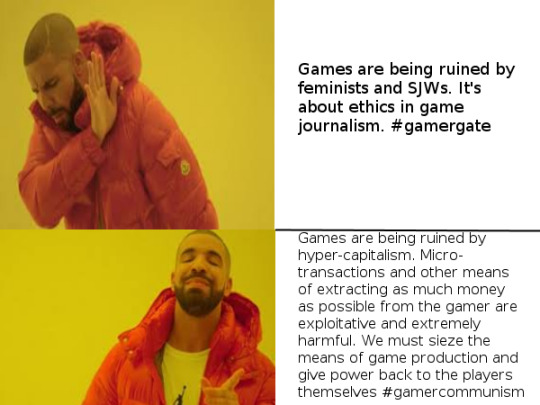Ali here! You might notice this is not your conventional "Tumblr" blog, rather it is an exploration into the ideas, activities and reading within the MDA200009 unit at Swinburne University. Feel free to follow as I will follow you back, and help me out with this social network, that I am still trying to get familiar with. ENJOY :)
Don't wanna be here? Send us removal request.
Text
WELL THIS IS IT!
It’s over. But what a semester.
This semester has been great. The content. The assessment. The tuts. All have been great.
So once again, thanks for an awesome semester.

6 notes
·
View notes
Photo
THE FEELING THAT THE SEMESTER IS DONE!

New GIPHY!
3K notes
·
View notes
Photo
Maybe they got a good point ??

Are China really worse off?
16 notes
·
View notes
Link
Woooahhh, good find
Wooaahhh. Okay. Just watch this
8 notes
·
View notes
Photo
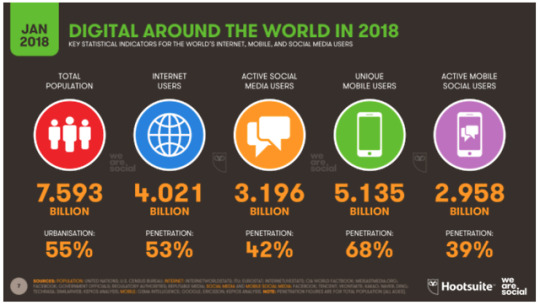
Chaffee, D 2018, ’2018 Social media stats update’ [image], Global social media research summary 2018, Smart Insights, viewed on 25th May 2018, <https://www.smartinsights.com/social-media-marketing/social-media-strategy/new-global-social-media-research/>
0 notes
Quote
Every small action MATTERS Because when 7 BILLION people do that thing, it CHANGES THE WORLD
Achim Steiner
0 notes
Text
#8 GLOBAL SOCIAL MEDIA PRACTICE
Well, I made it, you made it. THE FINAL POST!!

So, if you ever find yourself in China, this website along with Facebook, YouTube, Twitter and even Google aren’t able to be accessed in china, due to the Great Firewall created by their government. They had the intention to prevent their citizens from learning unwanted foreign information as well as politically sensitive reporting, that may in any way could damage the traditional values of the country. And right now, the firewall is the biggest digital boundary in the world.
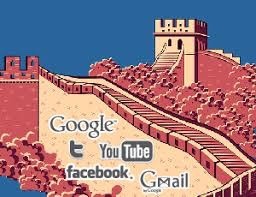
“771 million’ (Statista 2017) of the 1.379 billion people in China, so over half, have access to the internet besides certain websites that are already banned. Showing to the world that Chinese people are still one of the most active users.
This just straight up blows my mind.
Despite having no Western social media platforms, Chinese internet have their own home-grown platforms (Crampton 2011). Because they have such a different purpose they haven’t taken off in other countries and stayed within China as they have not prevented any local social media topics from being shared on other platforms outside of the firewall.
Censorship?? What even is it?? It’s the “suppression or prohibition of speech and writing that is deemed subversive of the common good” (Anastaplo 2018). Censorship enables users to have other social media platforms, but can be highly monitored and tracked by the government, and help to prevent certain information from leaking to the public.
The Chinese Government reinforced their internet Firewall in late 2012. And since then all of their platforms no matter the topic have been heavily monitored and surveillance, although this does tend to raise some concerns about their freedom of speech and opinion amongst the Chinese community. But even with this restrictions, no one is able to pull the Chinese away from their social media, really no one can be pulled away from their social media platforms.
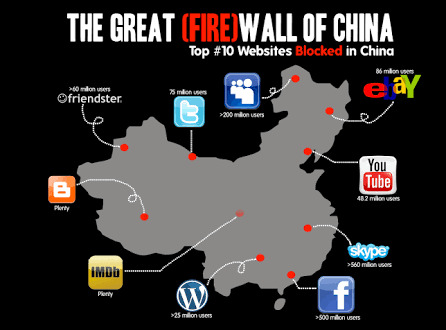
It’s not that I really really want to visit China, but I always planned on seeing as much as I could, and after learning about their restrictions it some what scares me. Like how would I keep in contact with my friends, my family, or even just maintaining my Snapchat streaks? But I now get that there is more out there than just Facebook, Snapchat, and Instagram, they have their own world for all their social media platforms.
References:
Anti, M 2011, 'Behind the great firewall of China', TedTalks viewed 25 May 2018 <http://www.ted.com/talks/michael_anti_behind_the_great_firewall_of_china.html>
Crampton, T 2011 'Social media in China: The same, but different' China Business Review, Vol 38, Issue 1, pp 28-31 viewed http://www.thomascrampton.com/china/social-media-china-business-review/
Statista 2018, Number of internet users in China from December 2006 to December 2017 (in millions), Statista, viewed on 25 May 2018, < https://www.statista.com/statistics/265140/number-of-internet-users-in-china/>
Agastaplo, G 2018, Censorship, Britannica, viewed on 25 May 2018, < https://www.britannica.com/topic/censorship>
0 notes
Text
The Great FireWall of China
Most of y'all know that China have blocked most western media and social media sites like Instagram, Facebook, Snapchat and most recently, Tumblr. As well as the search engine Google. Usually, we used VPNs to bypass and get access to our lovely “unmonitored” (although the NSA is sure looking at our shit. So if my American followers repost this, HI GUYS!) compared to the Chinese social media equivalents which are SUPER MONITORED. If you post anything the government doesn’t like, they delete it before it is uploaded to their internet. I know, maddening. Well! China has done it again! This time, with the VPNs, they will be banned by 2018. Already, I have noticing trouble connecting with the ones I have and haven’t been able to download anything new 😓. Even the VPN routers are being blocked…Which leaves me to wonder, what will people come up with to bypass the blocking of VPNs…WhatsApp was another social platform which has been noticing some messages getting deleted and video and images being unable to send. Anyways….y'all will be seeing less of me as the months go by. And that sucks.
64 notes
·
View notes
Quote
Yes I'm a girl. Yes I'm a gamer. No I'm not fat. No I'm not ugly, and no I'm not the most attractive woman in the world
Anonymous
0 notes
Text
#7 SOCIAL GAMING - PLAYING THE CROWD
Look at that second last week! Almost there!
I don’t see myself as a ‘gamer’ unless the occasional game of Wii Sports or Mario Kart counts? However, some of my mates are gamers, and with the games they play and the gaming communities they belong to, they find it being a big part of their lives.

Now what is the first thing that comes to mind when you think about social gaming?? Well, there’s no correct answer, but I bet it’s a couple of nerdy guys – whether they are actually guys or are girls – but they tend to play games with others online. From casual gamers of Candy Crush, to the online worlds of World of Warcraft, gamers have been interacting in so many ways for decades now.
World of Warcraft or Second Life sees the player able to escape from their own reality and become a virtual character. They have the chance to create a new personality and have another life away from their actual one. This is where you can presume gaming addiction can come in, as it is so easy for any user to lose themselves in a virtual world they have created.
Similar to my other posts, about how the internet has managed to affect so much, it has also managed to changed gaming. Especially through how gamers can interact with each other, it’s gone from playing each other in the same to being on opposite sides of the town, even country, and communicating through wireless headphones on the game. And since there are no time limits on the users or games, two players can play from different continents at the same time with no restrictions, besides the lack of sleep that usually comes with gaming all night.

When you have so many users and worlds going on around each other, conflict tends to follow, and tends to relate directly to online bullying and verbal harassment.
Developers of games, tend to develop internal rules for their gamers, to help control and govern how users interact with other. Sometimes the rules are created informally by players in a social environment, with new cultural norms emerging from the game space. DeZwart (2014, p.77) also looks at the rules and guidelines that are being set up by lawyers of the developing companies, in interest to keep the company safe and protect players that adhere to their rules.
Although every time I go to one of my best friend’s house – note she is a she – we almost always end up playing a video game that I have no idea what I’m doing but at least having a good time attempting to shoot things whilst chatting away. And every time I leave her house I know she’s going to keep playing till like 2am, like almost any guy is doing our age.
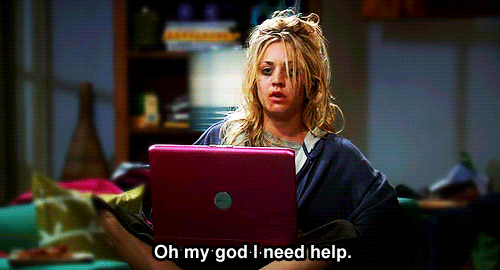
Gaming has been a fascinating and important part of our generation, and I believe it will continue to be important future generations. I’m now an expert about games or even playing games, but I can recognise the major role it has been to so many players behind closed doors.
References:
Nick Suzor and Darrel Woodford (2013) 'Evaluating consent and legitimacy amongst shifting community norms: An EVE Online case study' Journal of Virtual Worlds Research
Melissa de Zwart & Sal Humphreys (2014) The Lawless Frontier of Deep Space: Code as Law in EVE Online' Cultural Studies Review
0 notes
Link
#7 Social Gaming - Playing the Crowd
Prezi Presentation
0 notes
Text
Is Dr Google even any better???
Tips for self diagnosing
-Don’t
2K notes
·
View notes
Photo



Surrogate for her brother
Unmarried couple with a baby
Adopted because couldn't conceive
1990′s and showing the non-typical ways to have a family.
Doing Well
2 notes
·
View notes
Quote
Go into the world and do well. But more importantly, go into the world and do good
Minor Myers
0 notes
Text
#6 PUBLIC HEALTH CAMPAIGNS & COMMUNITIES
Even though it is embarrassing, I can admit to self-diagnosing myself through Google searching my symptoms, like have I got tonsillitis or am I dying?? Surely Doctor Google will know.

Social media allows its users to explore the unseen. And when an unknown topic comes onto social media – Like the ALS Ice Bucket Challenge – it has the potential to almost takes over the network. Although, social media also provides an insight to our friends and followers. In particular Blogs, can be “used extensively to self-document the intimate and often intensive experiences of living with serious illness” (McCosker et al. 2013), and can be another way for user to have an insight to friends, followers or even people going through a similar rough time.
As the Internet has grown and the amount we use it has as well, the amount of fitness and health information available to us has grown vastly as well. This is users sharing their fitness routines and goals, knowledge about diet’s and healthy eating, and finally individuals showing off their healthy lifestyle.
A social media campaign that I believed to be a huge success on social media was the ALS (Amyotrophic Lateral Sclerosis) Ice Bucket Challenge. This became popular from the number of users, but also how interconnected it made users, even I can confess to being a part of the challenge as well as my friends. As they would be nominated by a friend to video themselves pouring a cold bucket of ice on themselves, to then nominate another 5 friends, and so it went on and on, and reached countries all over the world. This was done, with the ice being poured on the body, as it made participants feel the weakness and failure of their muscles and gives them a small understanding of what it would be like to live with ALS. It was also encouraged to donate to the ALS or Motor-Neuron Disease foundation, and once the videos were shared across social media the hashtag #IceBucketChallange, became one of the most popular hashtags of all time.

Movember is a similar charity event that is concerned with men’s health. “The event takes place during November and predominantly involves male participants being sponsored to grow a moustache and document the activity” (Burgess et al. 2013). And in a research conducted by Burgess, Cassidy and Light, they came to the conclusion that during this specific example – Movember – that “superficially is strong within the even where higher levels of activity are concerned” (Burgess et al. 2013). Showing that people are more fascinated and involved by the idea of participating, and hence just throwing a bucket of ice on themselves. But as more people do this there is more people that know about ALS and hence are spreading awareness of the health campaign.

Having social media as a tool to spread awareness almost immediately, for individuals struggling with health issues enhances the importance of positive messages across various platforms and shows how much power social media has, and how well it can spread awareness on health.
References:
Burgess, J., Cassidy, E., & Light, B. (2014). ‘Deeply superficial Digital Media Engagement? The Case of Twitter and Movember 2013’. Paper presented at AoIR 15, Daegu, Korea
McCosker, A. (2016) 'Digital Mental Health and Visibility: Tagging Depression', in P. Messaris and L. Humphreys, Digital Media: Transformations in Human Communication (2nd edn), Peter Lang.
0 notes

